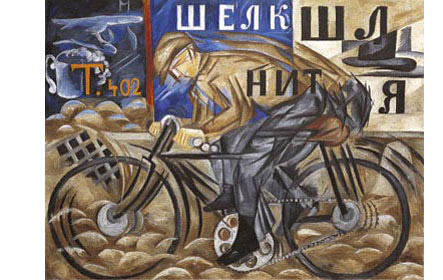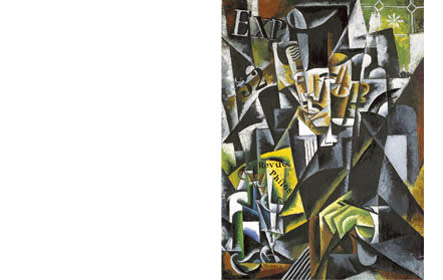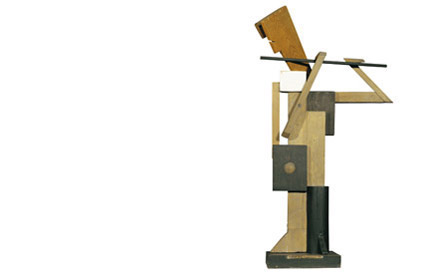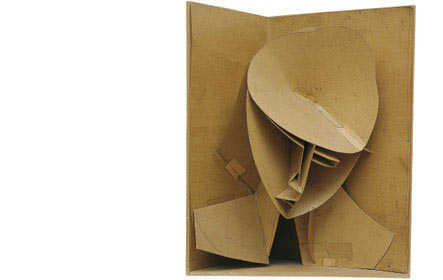
|
A WHIRL OF ENERGY The next section looks at formal innovations in the period 1912 to 1917 and is also divided into two parts. The first conjointly presents a summary of the development of Russian Cubo-futurism - an original blend of elements derived from Cubism, Futurism and Expression - and Rayonnism, headed by Larionov and Goncharova, who aimed to represent the dispersion of light rays through simple forms. The second part includes early works by Tatlin, Baranov-Rossiné, Puni, Gabo, Kruchenykh and Rozanova, all artists inspired by the quest for a language "beyond reason" which would take the form of a new representation of space through non-traditional materials. |
|
Natalia Goncharova The Cyclist, 1913 Oil on canvas. 79 x 105 cm State Russian Museum, St. Petersburg |
|

|
Liubov Popova Portrait of a Philosopher. Cubist Construction, 1915 Oil on canvas. 89 x 63 cm State Russian Museum, St. Petersburg |

|
Vladimir Tatlin Corner Counter-relief, 1914 Iron, copper, wood, and strings. 71 x 118 cm State Russian Museum, St. Petersburg |

|
Ivan Kliun Musician, 1916 Assemblage. Painted wood. 96.5 x 53 x 19 cm State Tretyakov Gallery, Moscow |

|
Naum Gabo Model for Constructed Head no. 3 (Head in a Corner Niche), 1917 Cardboard. 61 x 48.5 x 34.5 cm Collection Annely Juda Fine Art, London |









